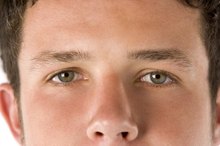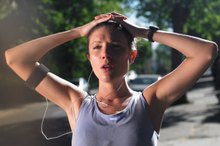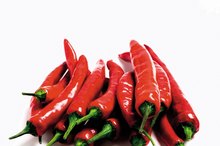Rashes and Hives From the Cold & Exercising
Rashes and hives are often external symptoms of your body fighting off an invader, irritant or allergen. While we often think that these symptoms can only occur due to exposure to something physical, like dust or poison ivy, the truth is that rashes and hives can both occur due to temperature changes, such as the cold of winter or a cold room, or the heat and activity associated with exercise. These reactions are known as cold urticaria and exercise induced urticaria 3. People with food allergies may be more susceptible to this condition.
If you are experiencing serious medical symptoms, seek emergency treatment immediately.
Mast Cells
Both cold induced and exercise induced urticaria involve the activity of mast cells 3. Mast cells are connective tissue cells which release a product called histamine. Histamine plays a role in allergic reactions by making blood vessel walls more permeable and dilating blood vessels, which helps the immune system in the case of a real threat to the skin, such as the presence of a harmful antigen. However, with cold or exercise urticaria, the mast cells become activated when exposed to cold temperatures or with exercised induced urticaria are activated due to the increase of body temperature experienced with exercise.
- Both cold induced and exercise induced urticaria involve the activity of mast cells 3.
- Histamine plays a role in allergic reactions by making blood vessel walls more permeable and dilating blood vessels, which helps the immune system in the case of a real threat to the skin, such as the presence of a harmful antigen.
Presence on the Skin
Post Nasal Drip When Working Out
Learn More
When mast cells become activated, the permeable blood vessels caused by the introduction of histamine can cause fluid to leak from the surrounding affected blood vessels to leak into the skin. The introduction of the fluid in the skin produces an itchy rash or, in more severe cases, hives. The rash and hives can be accompanied by swelling as well as mast cells can misfire in reaction to cold and exercise, and other inflammatory cells like basophils and leukotrienes can be activated as well.
Treatment
Treatment for hives or rashes associated with cold or exercise can vary depending on how severe your reactions are. For mild cases of urticaria, an over-the-counter antihistamine may be enough to block mast cells from producing the histamine that causes the reaction. For more severe cases, prescription histamines may be used, such as cetirizine or levocetirizine, or the antihistamine cyproheptadine may be used to block the production of histamine and block the nerve impulses that can lead to a reaction. For hives and a rash that have already developed, over-the-counter anti-itch creams can be used to help ease discomfort until the symptoms subside.
- Treatment for hives or rashes associated with cold or exercise can vary depending on how severe your reactions are.
- For mild cases of urticaria, an over-the-counter antihistamine may be enough to block mast cells from producing the histamine that causes the reaction.
Prevention
Hives Caused by Exercise
Learn More
Several steps can be used to prevent the occurrence or severity of your rash and hives. In general taking a daily antihistamine can help reduce the risks of a reaction during cold weather or exercise, or reduce the severity of a reaction. Taking simple steps such as wearing warm clothing when it's cold for cold urticaria, or exercising in an air conditioned space for those with exercise induced urticaria can help reduce problems with rash and hives 3.
Warning
In severe cases, a person may develop anaphyalaxis -- a life-threatening condition. In addition to hives, symptoms include:
- flushing of the skin
- wheezing
- nausea
- abdominal cramping
- itching
- diarrhea
If you experience these symptoms, immediately stop exercising and seek medical attention.
Related Articles
References
- Current Allergy and Asthma Reports: Exercise-Induced Anaphylaxis -- An Update on Diagnosis and Treatment
- American Family Physician: Exercise-Induced Anaphylaxis and Urticaria
- Lee SJ, Ha EK, Jee HM, et al. Prevalence and Risk Factors of Urticaria With a Focus on Chronic Urticaria in Children. Allergy Asthma Immunol Res. 2017;9(3):212-219.
- Stratta P, Badino G. Scombroid poisoning. CMAJ. 2012;184(6):674. doi:10.1503/cmaj.111031
- Schaefer, P. Acute and Chronic Urticaria: Evaluation and Treatment. Am Fam Physician. 2017; 95(11):717-724.
- Minty B. Food-dependent exercise-induced anaphylaxis. Can Fam Physician. 2017;63(1):42-43.
- Shin M, Lee S. Prevalence and Causes of Childhood Urticaria. Allergy Asthma Immunol Res. 2017;9(3):189-190.
- Griffiths, C.; Barker, J.; Bleiker, T. et al. Rook's Textbook of Dermatology (9th ed). West Sussex, U.K.: John Wiley & Sons; 2016.
Writer Bio
Chris Sherwood is a professional journalist who after years in the health administration field and writing health and wellness articles turned towards organic sustainable gardening and food education. He now owns and operates an organic-method small farm focusing his research and writing on both organic gardening methods and hydroponics.








